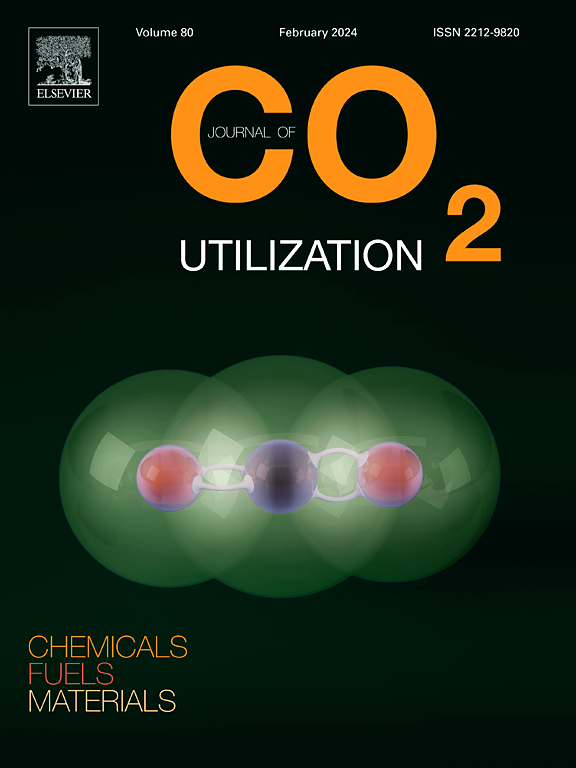Efficient utilization of high CO2 landfill-gas for syngas generation: Ultra-rich combustion pathways study in porous media reactor via CFD simulation
IF 7.2
2区 工程技术
Q1 CHEMISTRY, MULTIDISCIPLINARY
引用次数: 0
Abstract
The current investigation explores the possibility of extracting syngas from low-calorific value landfill-gas rich-combustion with pure O2, which contains a considerable amount of CO2 in its composition as an effective strategy in CO2 utilization. The results illustrate that enhancement in mixture velocity leads to a notable increment in syngas energy conversion efficiency from 36.9 % to 44.14 %. Furthermore, it was observed that the maximum rate of H2 production occurs at an equivalence ratio of 2.2, followed by a subsequent decrease until the end of the studied interval. At a mixture velocity of 25 cm/s, CH4 and CO2 conversion ratios reach a maximum of 89.02 % and 42.85 %, respectively, alongside the highest syngas production efficiency. Moreover, with an equivalence ratio of 1.6 and a fuel mixture containing 70 % CH4, the highest achievable syngas composition was found to be 0.3277 for CO, 0.2841 for H2, 0.0676 for CH4, and 0.2534 for CO2, indicating useful conditions for syngas production. Eventually, reaction pathways analyses revealed that the hydrogen abstraction reactions of hydrocarbon species by H radical which majorly progress through direct CH4 to H2 conversion route, and hydrocarbon recombination routes have a key role in H2 production from landfill gas. Moreover, for landfill gas with high CO2 content, direct CO2 to the CO reduction route is determinative. Conversely, when the CH4 content of landfill gas is high, hydrocarbon recombination followed by ketenyl radical formation and decomposition to CO is the primary pathway in different mixture equivalence ratios.
求助全文
约1分钟内获得全文
求助全文
来源期刊

Journal of CO2 Utilization
CHEMISTRY, MULTIDISCIPLINARY-ENGINEERING, CHEMICAL
CiteScore
13.90
自引率
10.40%
发文量
406
审稿时长
2.8 months
期刊介绍:
The Journal of CO2 Utilization offers a single, multi-disciplinary, scholarly platform for the exchange of novel research in the field of CO2 re-use for scientists and engineers in chemicals, fuels and materials.
The emphasis is on the dissemination of leading-edge research from basic science to the development of new processes, technologies and applications.
The Journal of CO2 Utilization publishes original peer-reviewed research papers, reviews, and short communications, including experimental and theoretical work, and analytical models and simulations.
 求助内容:
求助内容: 应助结果提醒方式:
应助结果提醒方式:


